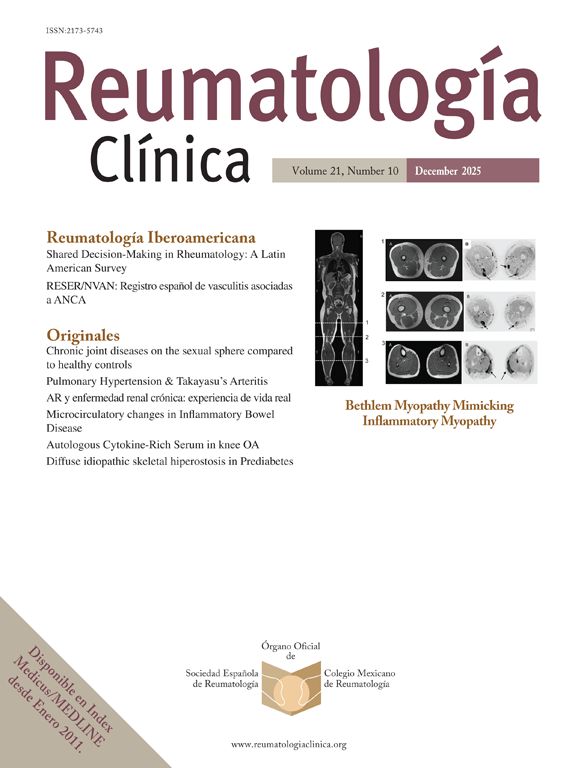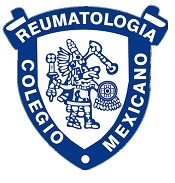Remitting seronegative symmetrical synovitis with pitting oedema (RS3PE) is a rare pathology, with a prevalence of 0.09%1 and predominance in people over 65 years of age, especially males. The aetiology of RS3PE is uncertain, however it is associated with genetic factors (HLA-B7), infections, vaccinations, systemic diseases, and neoplasms.2–4 The diagnosis is mainly clinical, based on the Olivo criteria5 (Table 1). Early identification is crucial due to its good prognosis with adequate treatment and its link to potentially more serious underlying diseases. The involvement of the SARS-CoV-2 viral infection in the development of autoimmune diseases such as this one may enable us to better understand the mechanism of its pathogenicity.
We present a case of RS3PE in an 86 -year-old woman with a history of hypertension, hiatal hernia, asthma, and cured hepatitis C, who developed symptoms two months after contracting SARS-CoV-2. The patient presented deterioration in her general condition, accompanied by oedema in the hands and feet, most noticeable on the right side, and pain with functional impotence but no fever. Examination revealed “boxing glove-shaped” oedema in the hands (Fig. 1) and pain in the proximal metacarpophalangeal and interphalangeal joints, with no joint stiffness. Blood tests showed leukocytosis, thrombocytosis, and elevated C reactive protein, with normal renal and hepatic function. In the autoimmunity tests, although the rheumatoid factor was positive, cyclic citrullinated peptide, along with the other autoimmunity studies, were all negative. No proteinuria or elevation of NT-proBNP was detected. Chest x-ray and imaging tests of the extremities were normal. After ruling out other causes of oedema and infections, and since the patient had no history of arthritis, RS3PE was diagnosed, meeting 6 out of Olivo's 7 criteria.
Treatment was started with prednisone 30 mg daily, and a favourable clinical response was observed. The patient experienced rapid remission of oedema and arthralgia, along with a significant decrease in acute phase reactants. She was discharged on a descending regimen of corticosteroids, maintaining a minimum dose with no relapses of arthritis or oedema and no evidence of underlying neoplastic pathology.
The aetiology of autoimmune inflammatory diseases is multifactorial, involving genetic predispositions and environmental factors such as viral infections,6 which can trigger inappropriate autoimmune responses.7 Infection with SARS-CoV-2 virus has been shown to be a significant trigger for various autoimmune conditions.6 A systematic review conducted in 2024 analysed the appearance of autoimmune diseases after SARS-CoV-2 infection. The study found that the risk of being diagnosed with an autoimmune disease was highest during the first year after infection. The diseases with the highest risk were cutaneous vasculitis, polyarteritis nodosa and hypersensitivity angiitis, while diseases with the highest incidence were psoriasis, rheumatoid arthritis and diabetes mellitus type 1. However, no cases of RS3PE8 were reported.
To date, there have been no other documented cases of RS3PE after infection with SARS-CoV-2 virus, although there have been cases after vaccination with BNT162b2 mRNA.9 This case contributes to increasing the evidence of the impact of COVID-19 virus on autoimmune diseases and highlights the importance of considering recent viral infections as possible triggers of rare inflammatory diseases.
Declaration of Generative AI and AI-assisted technologies in the writing processDuring the drafting of this study the authors used Chat GPT to improve the language and readability of the manuscript. After using this tool, they reviewed and edited the content, as necessary, and accept full responsibility for the content of this publication.









